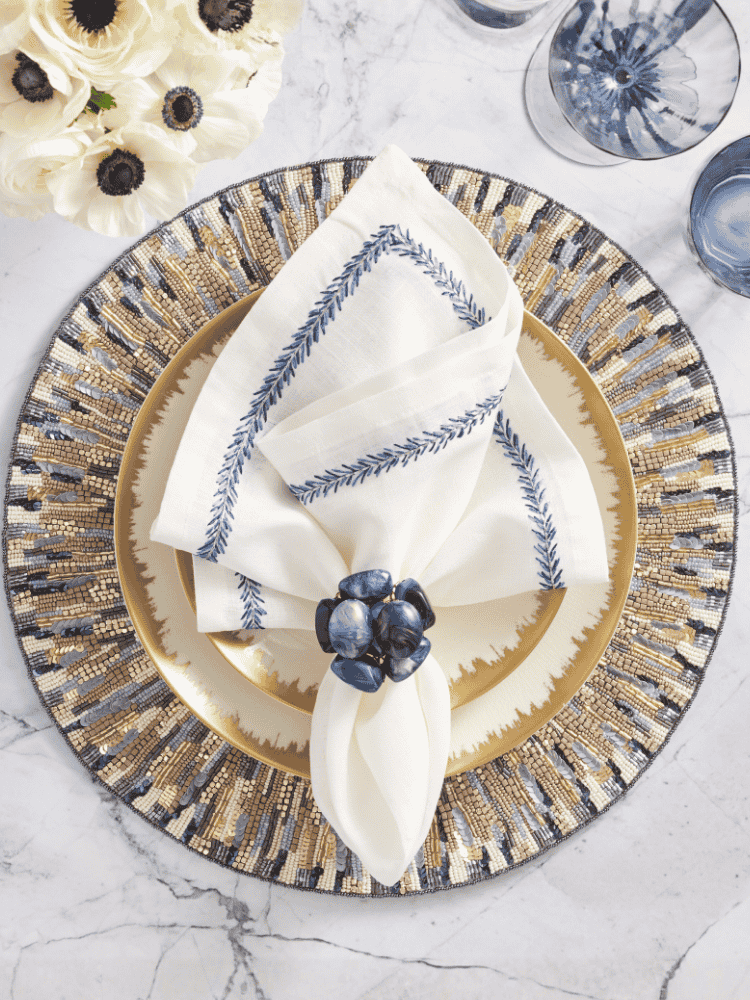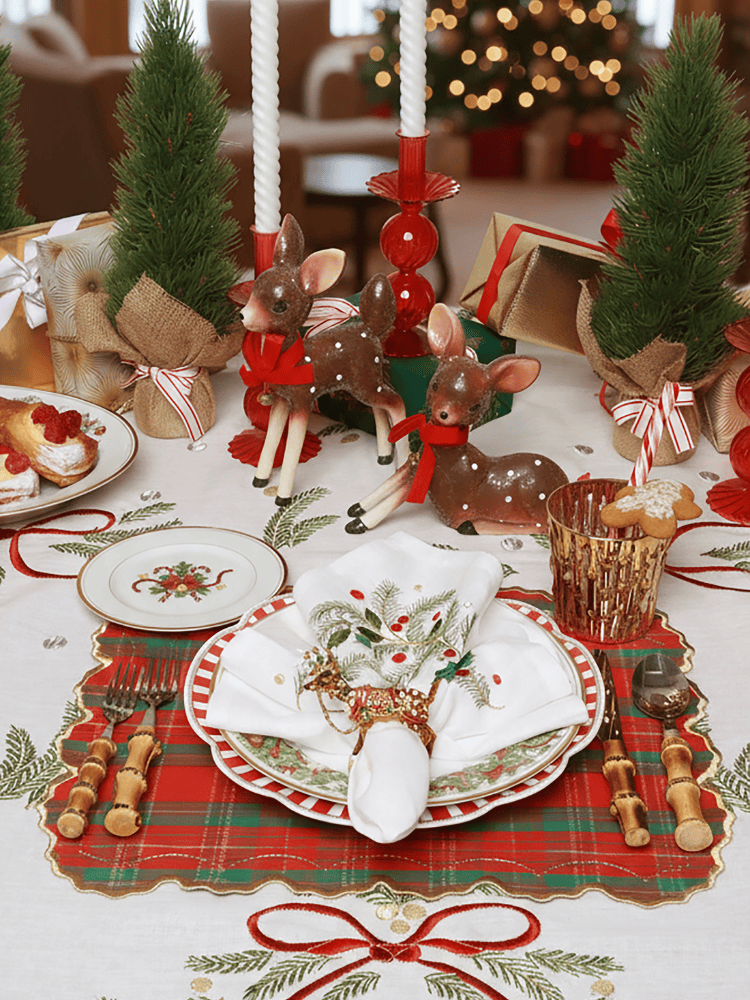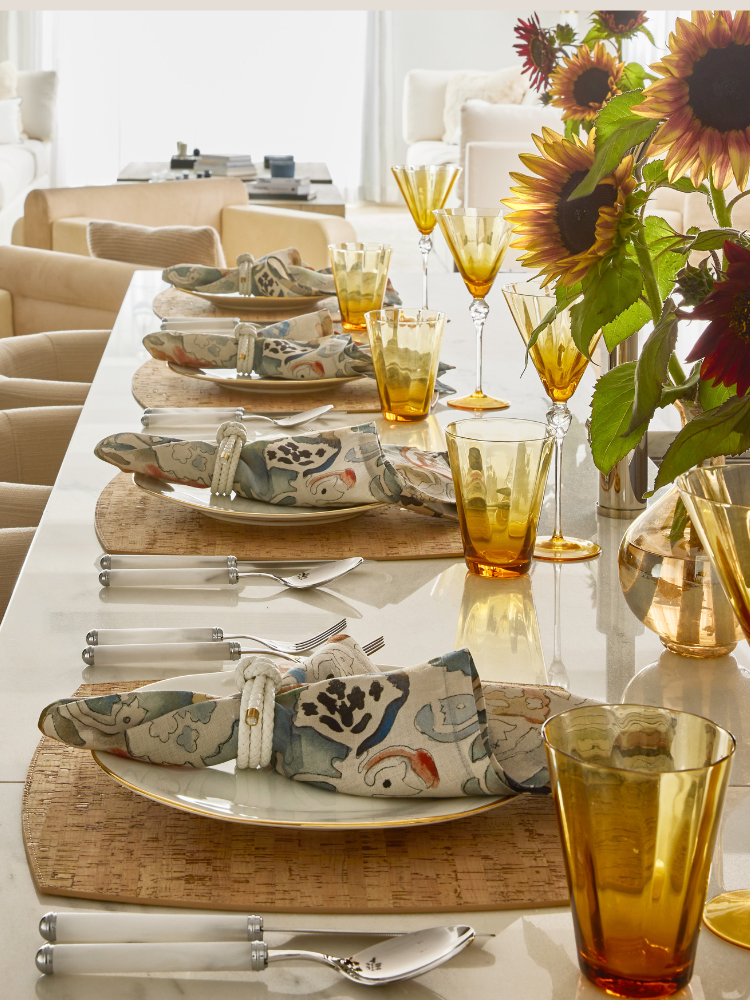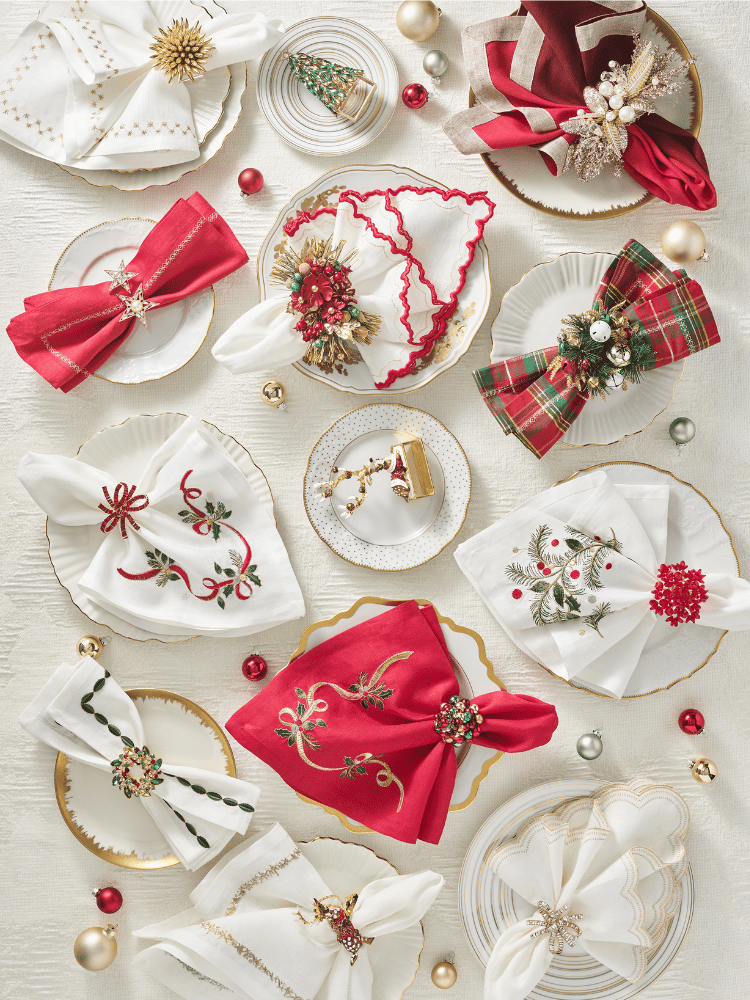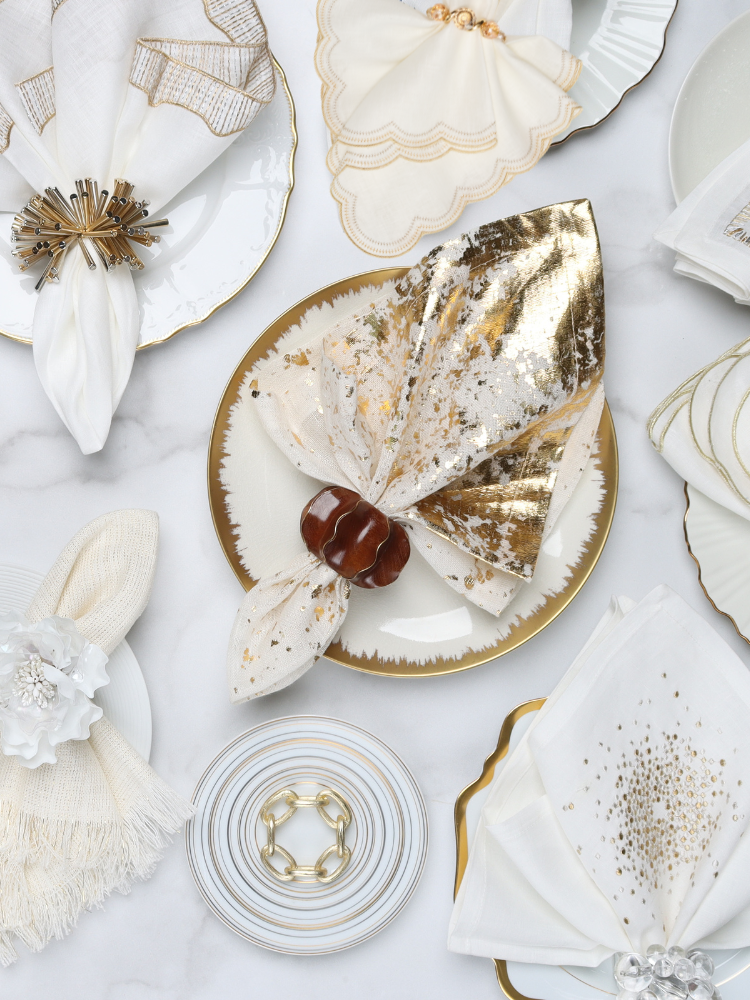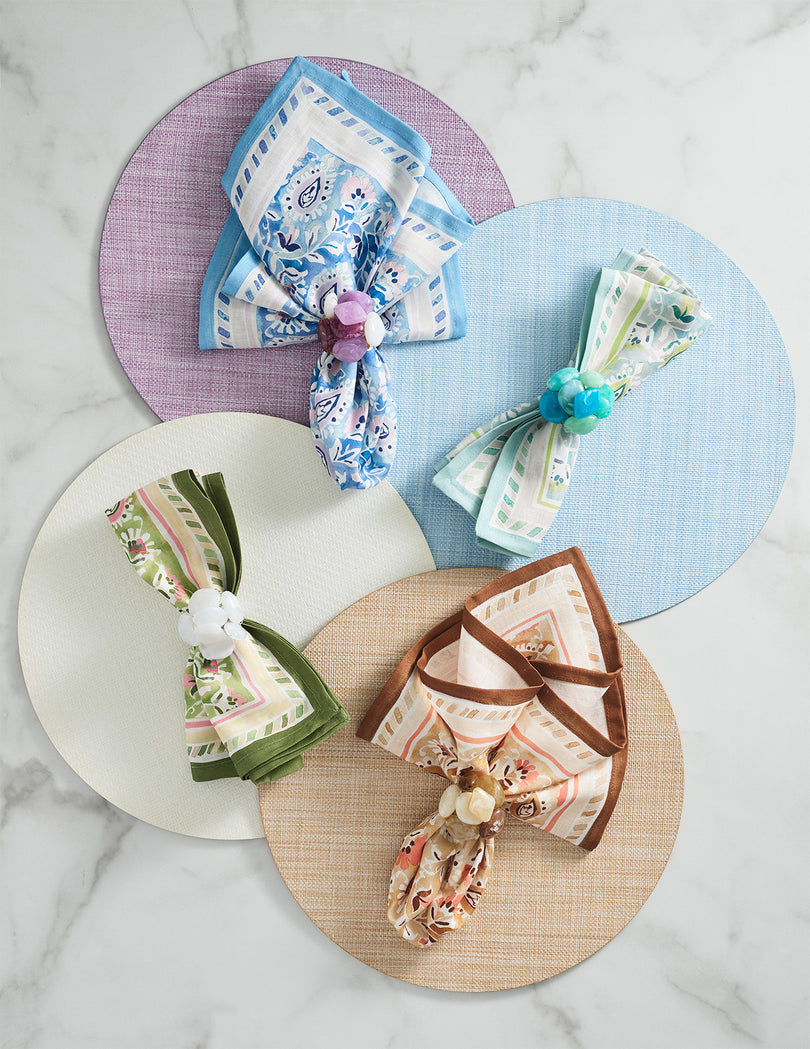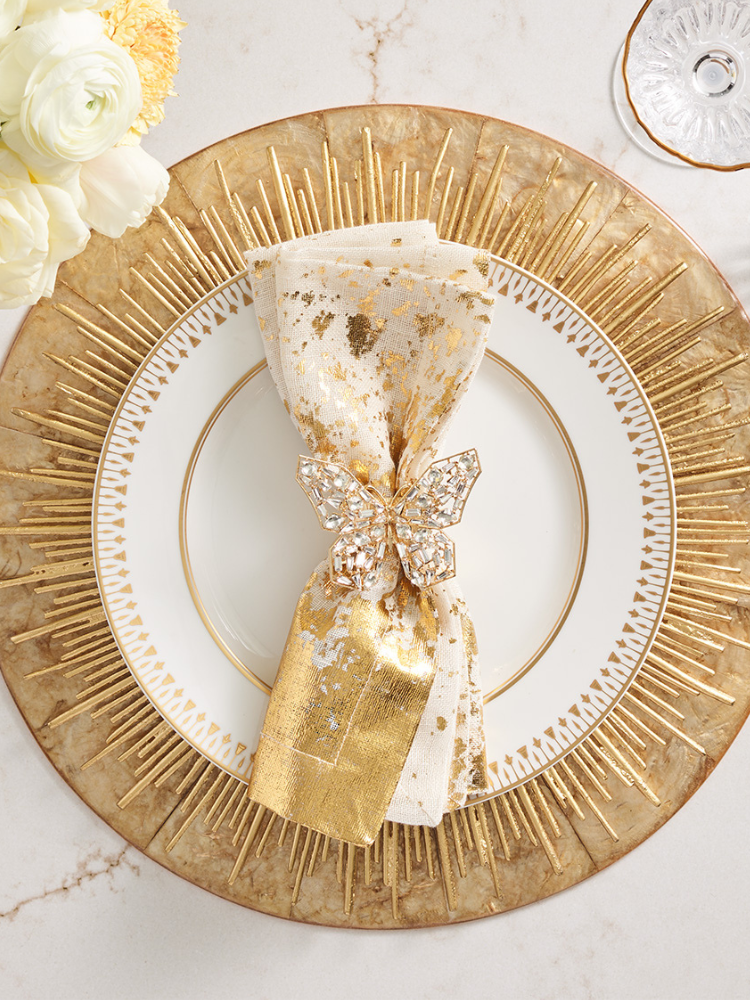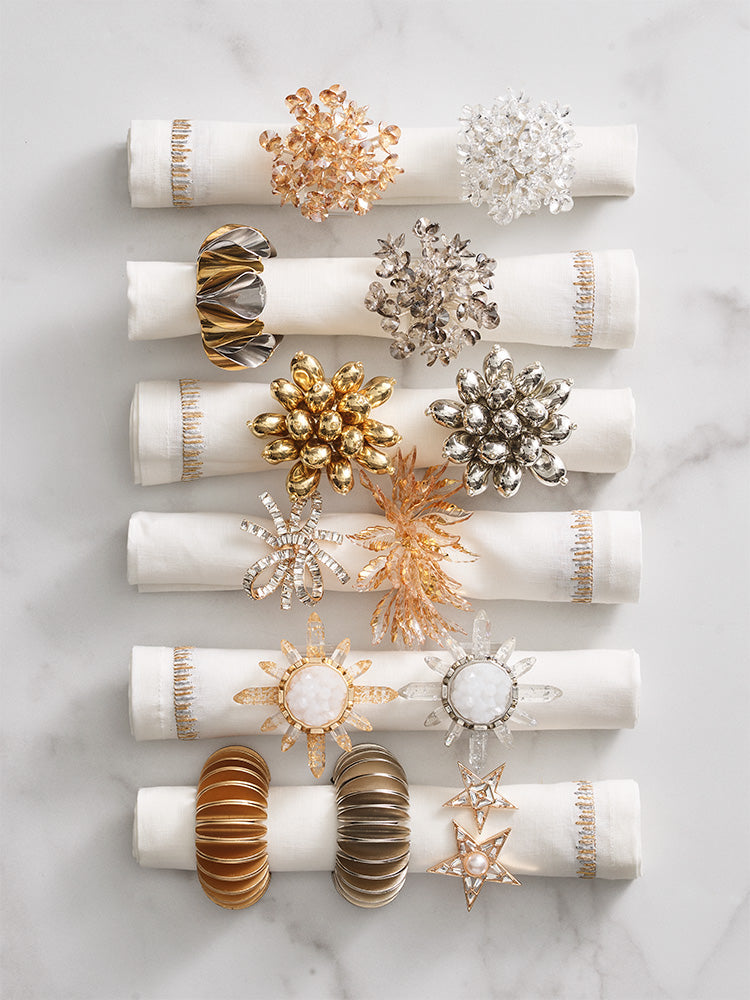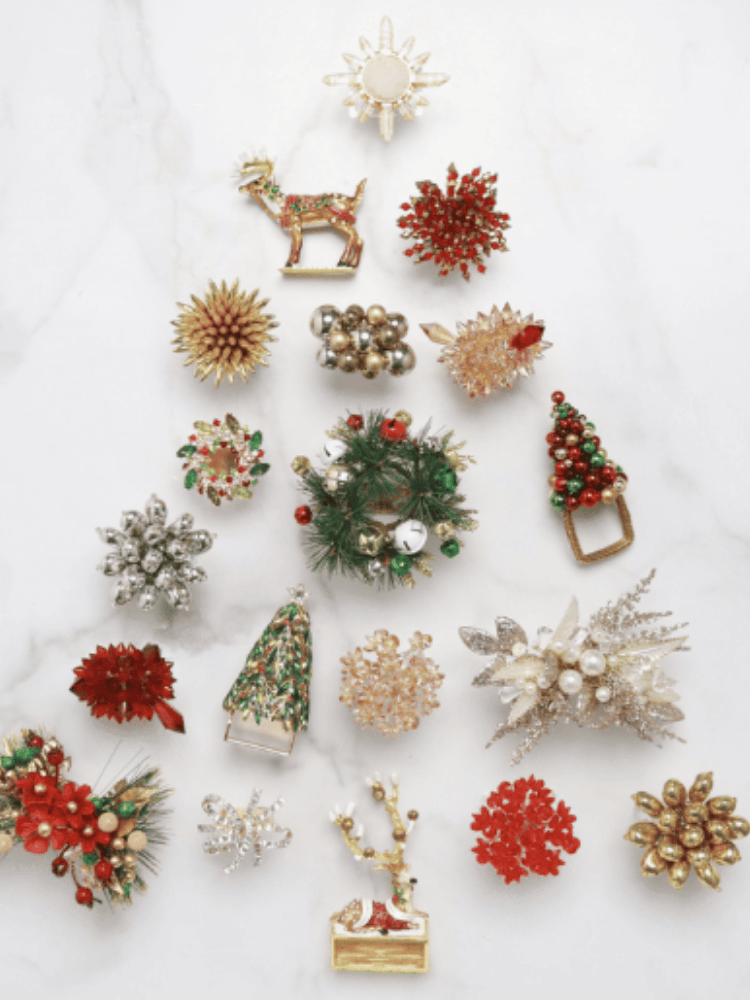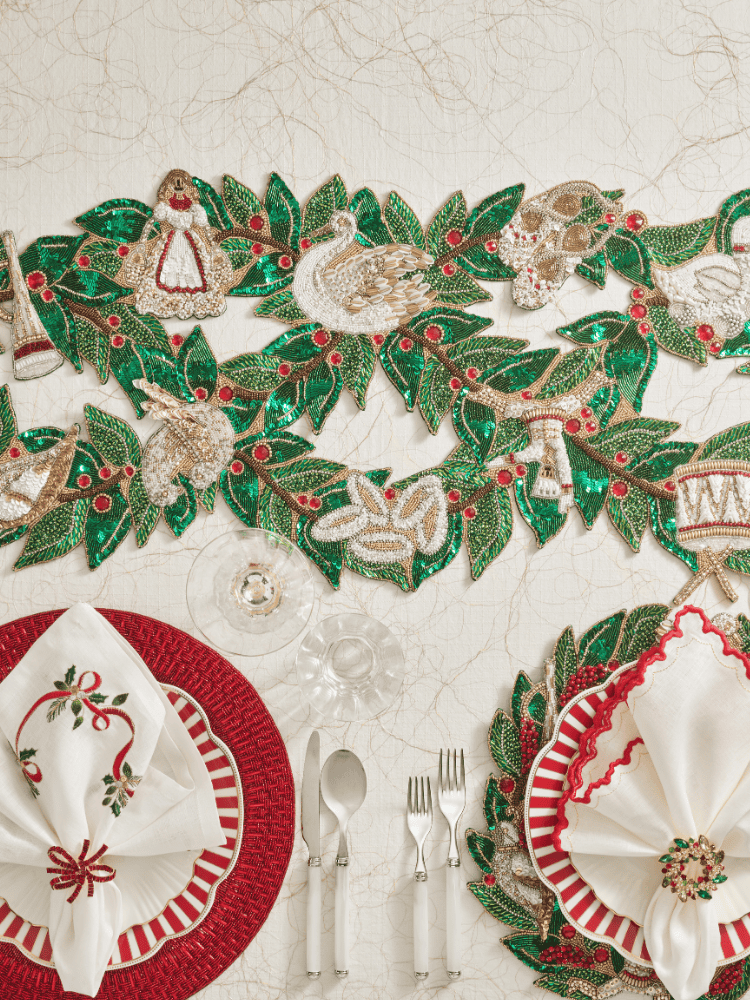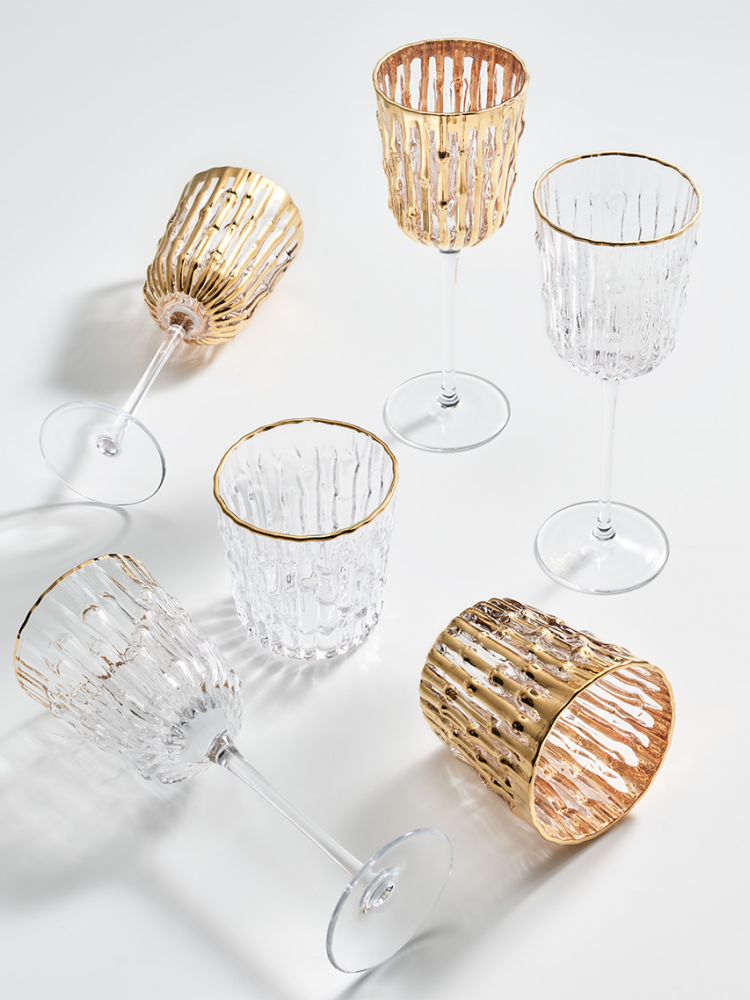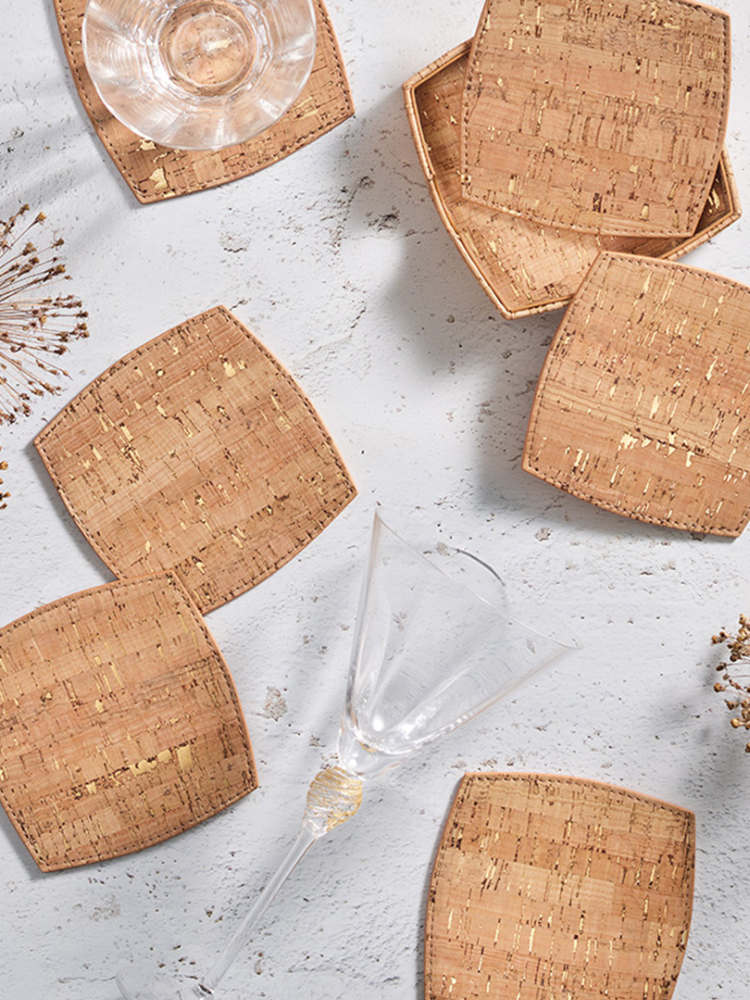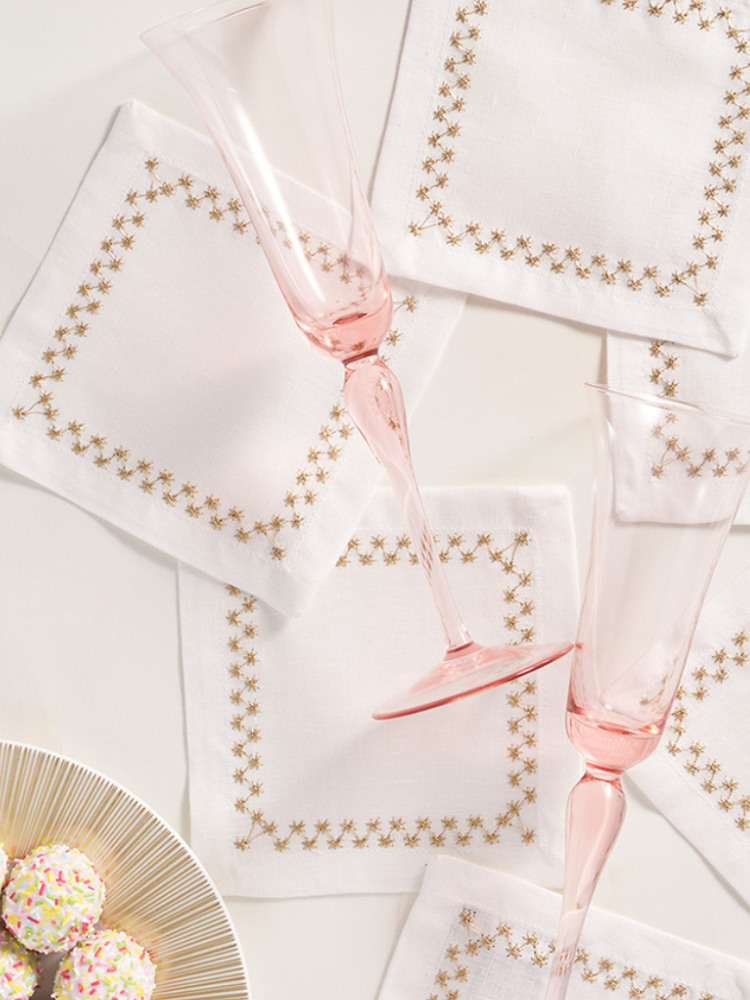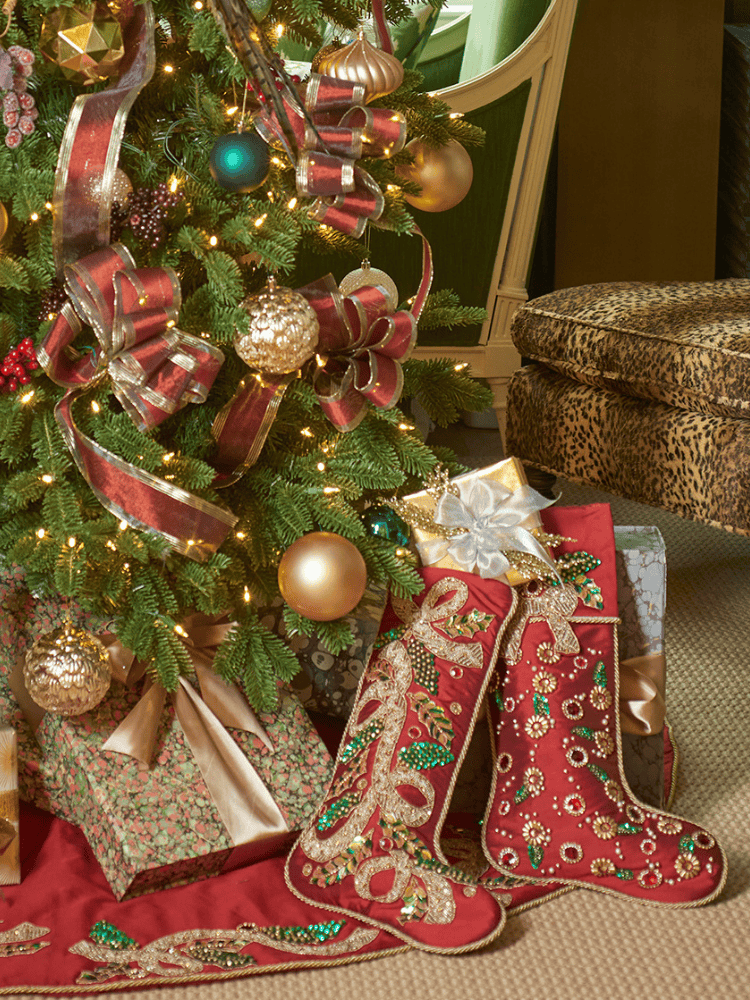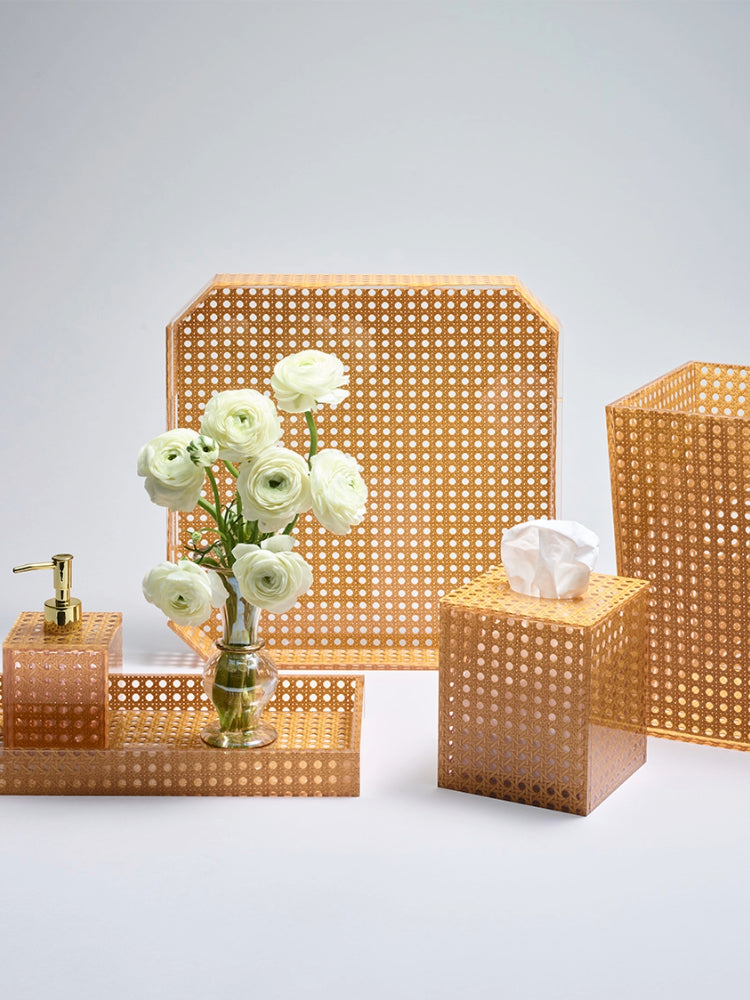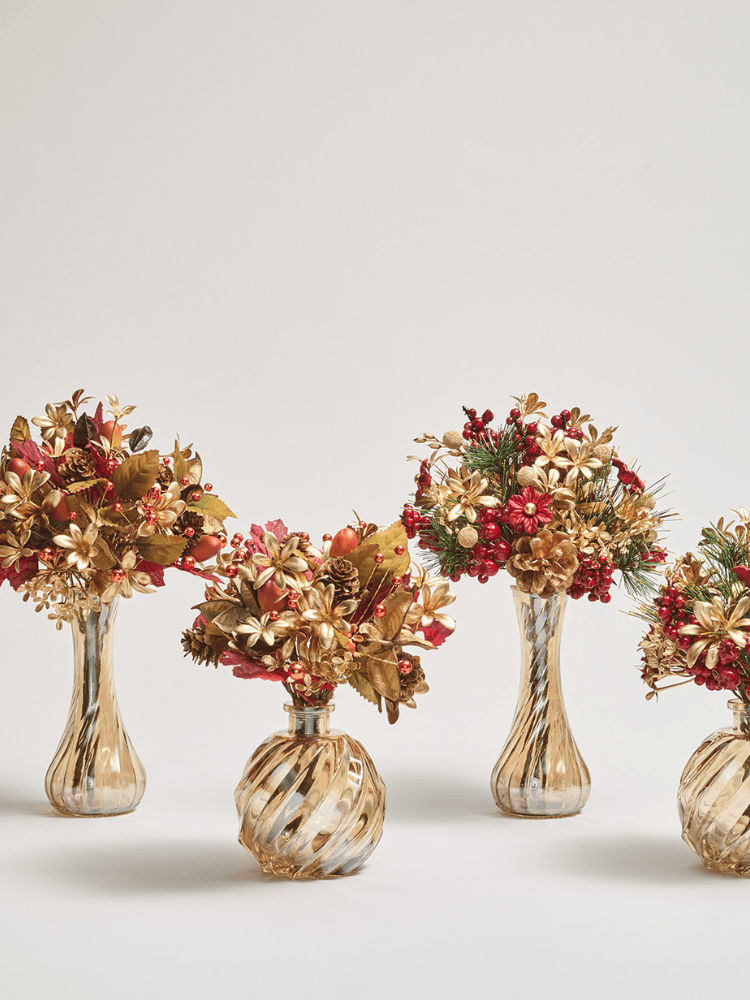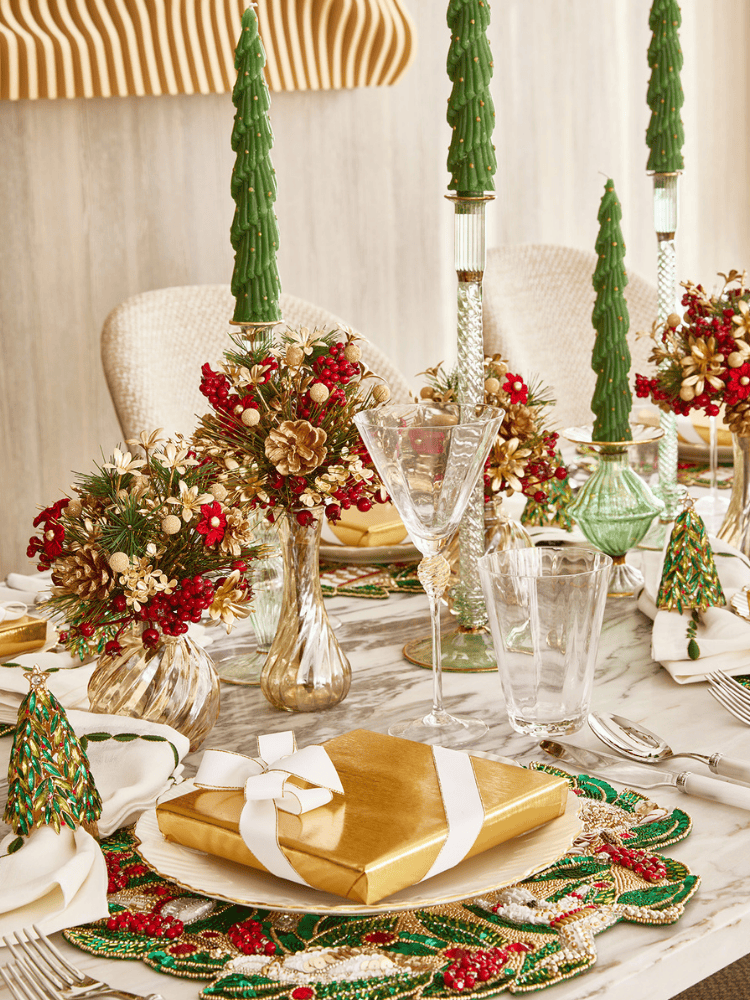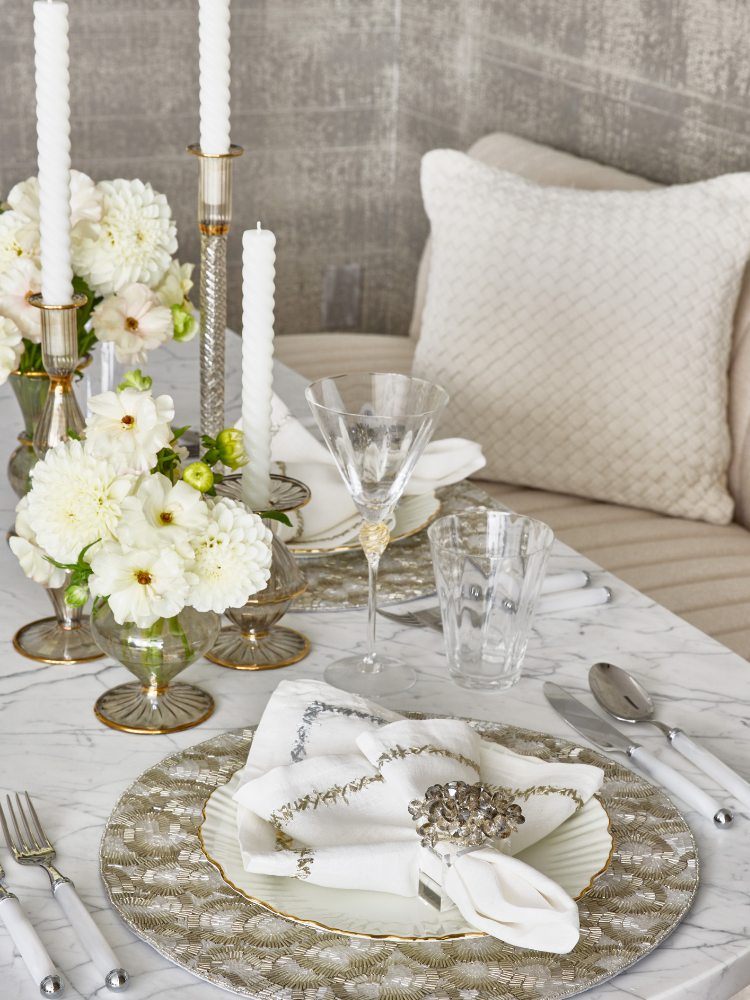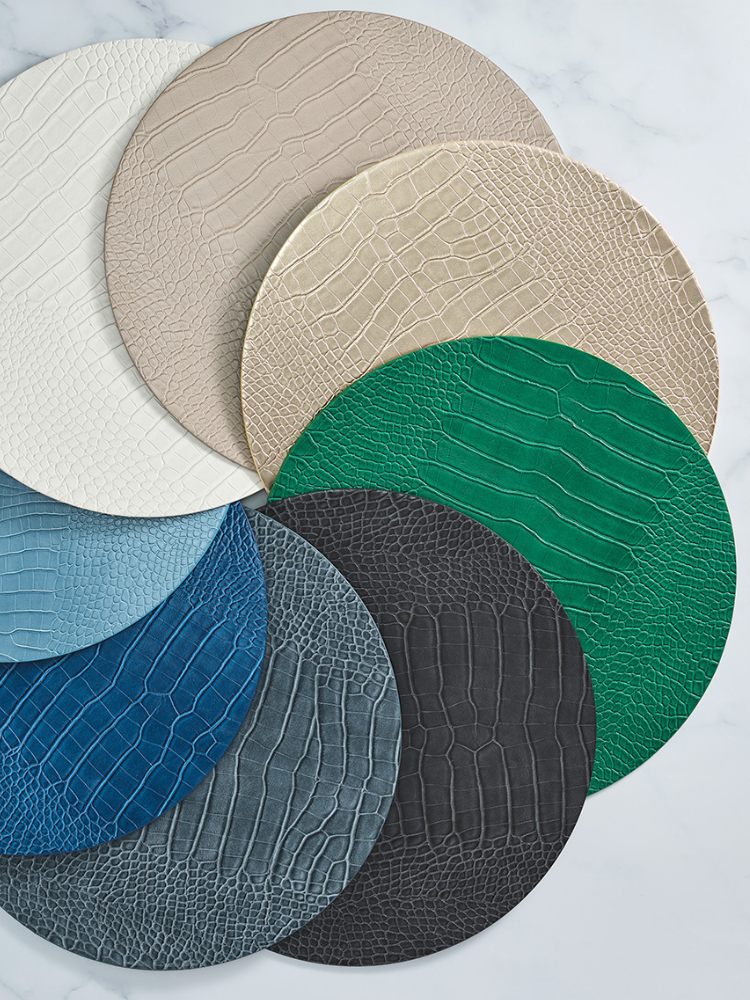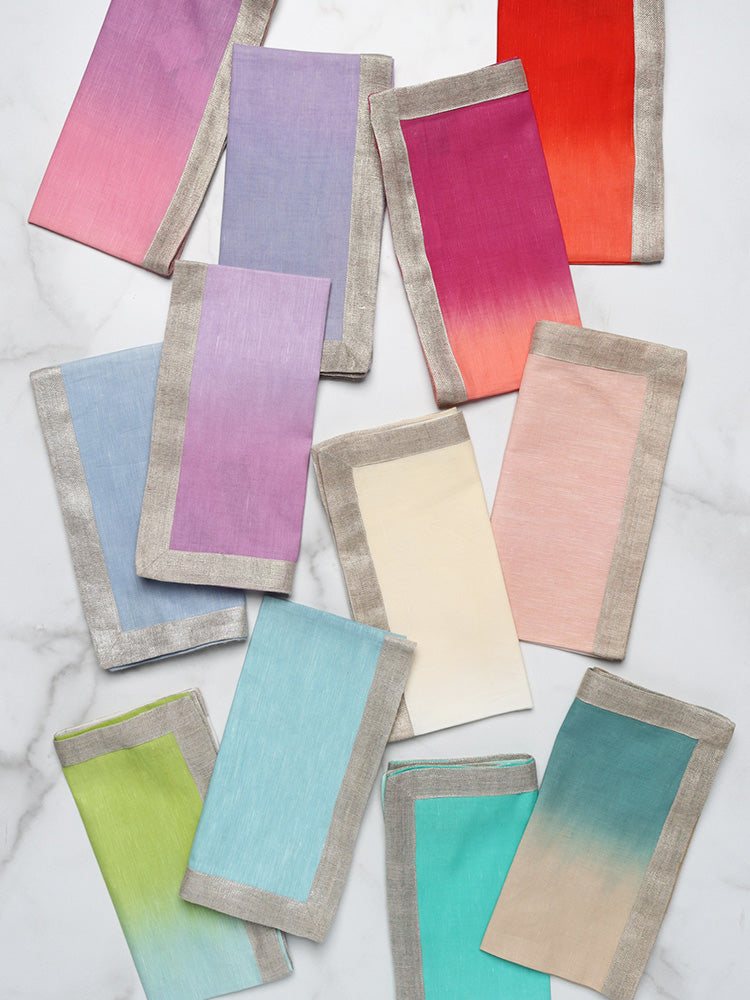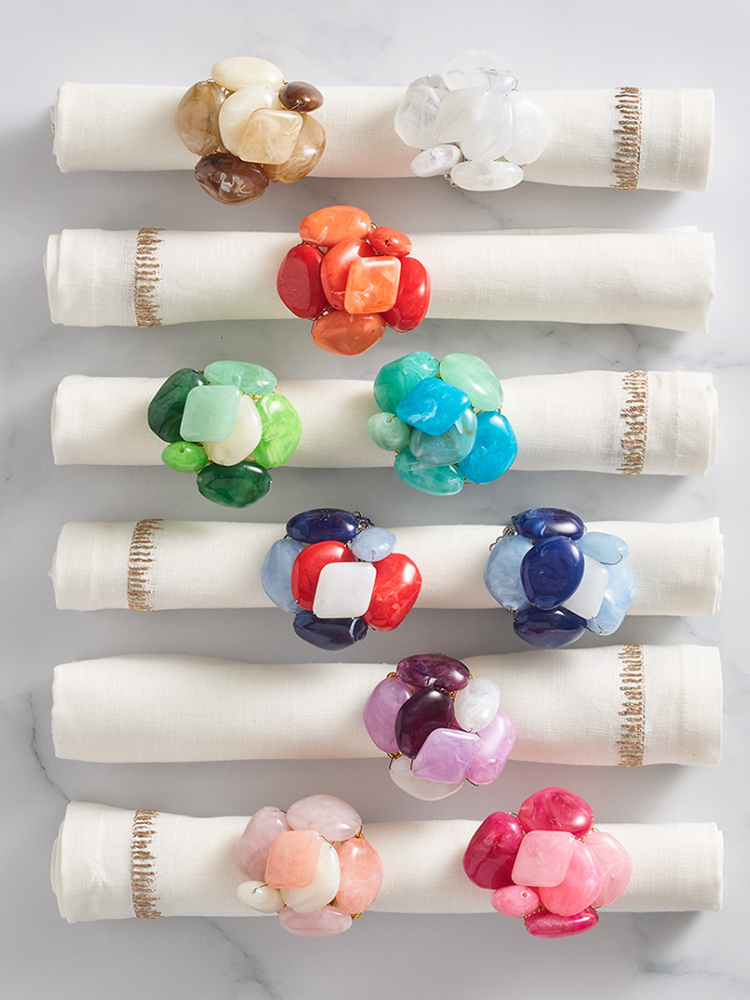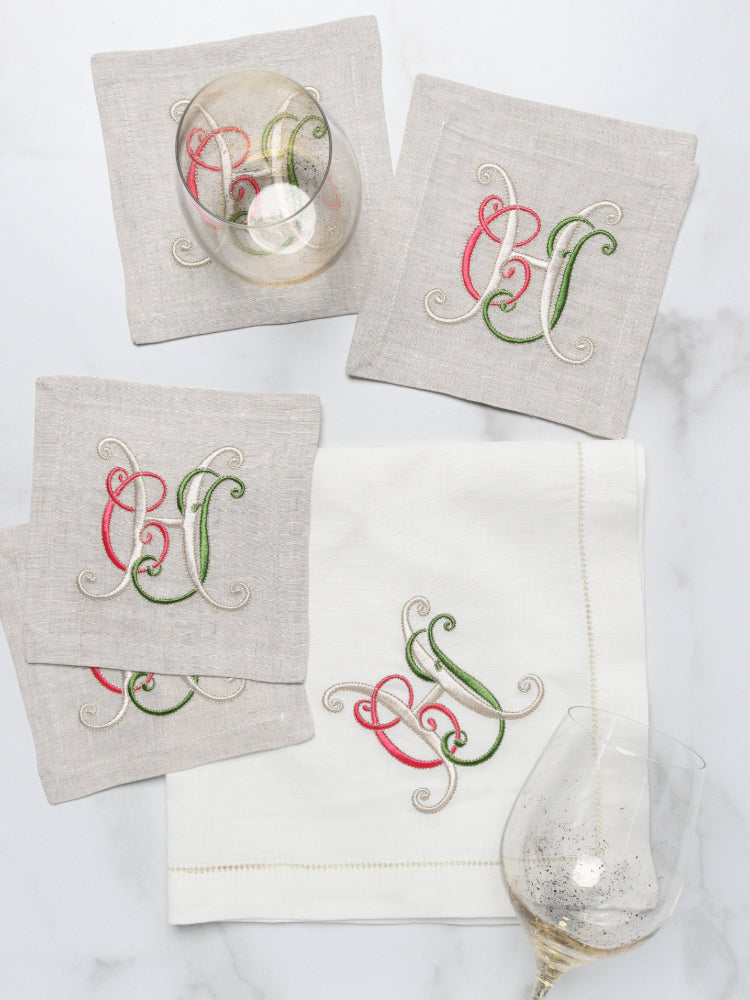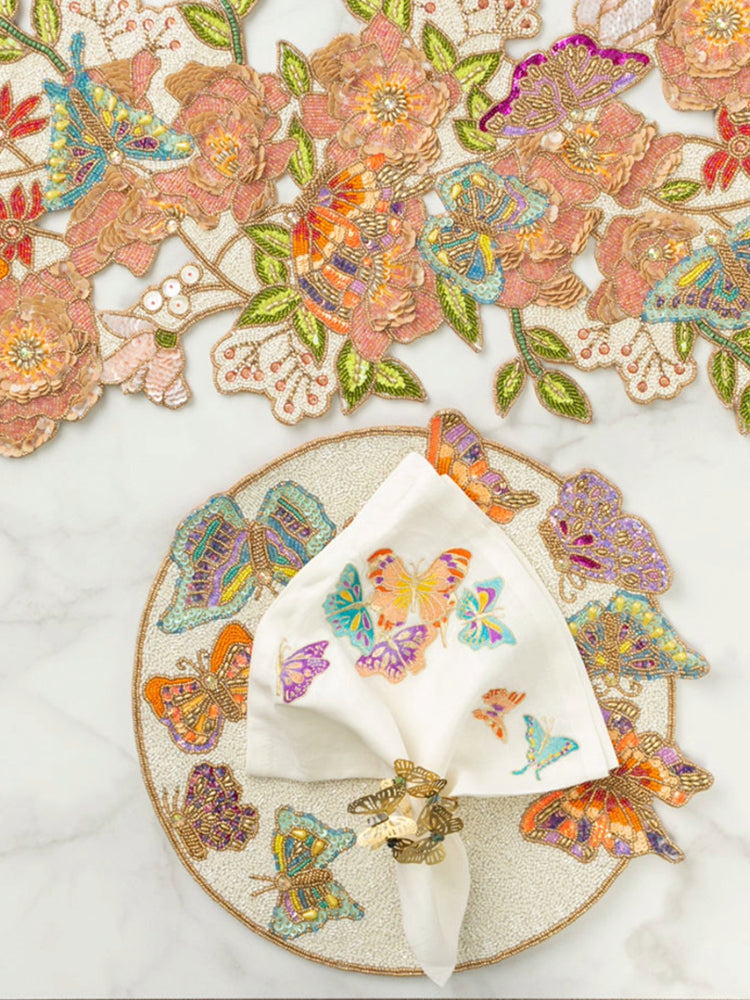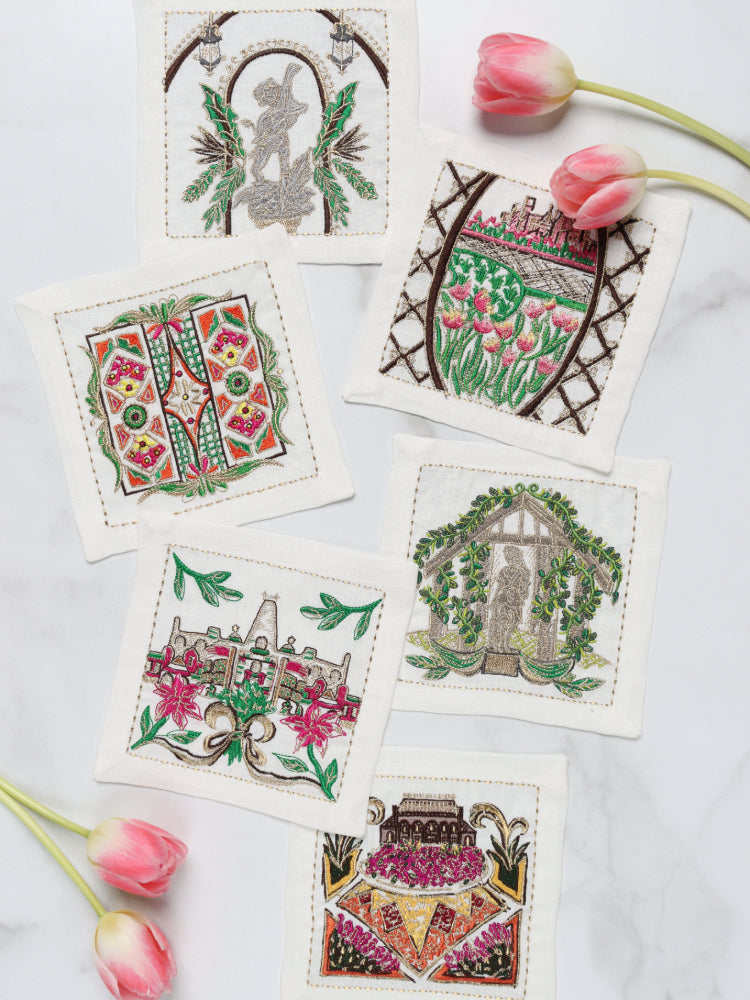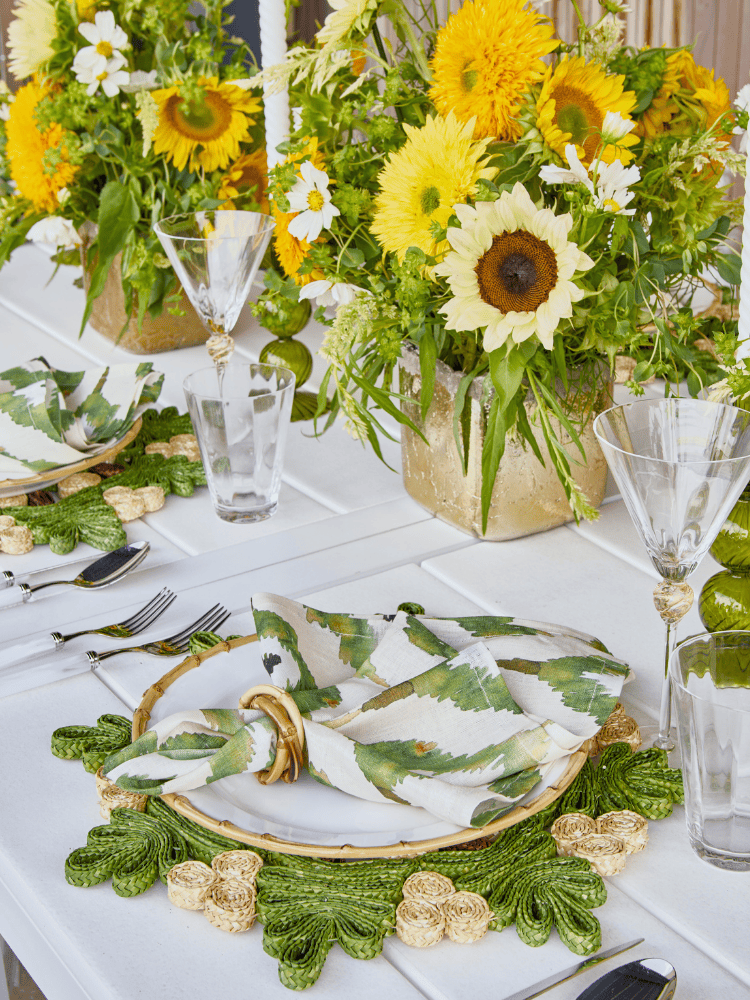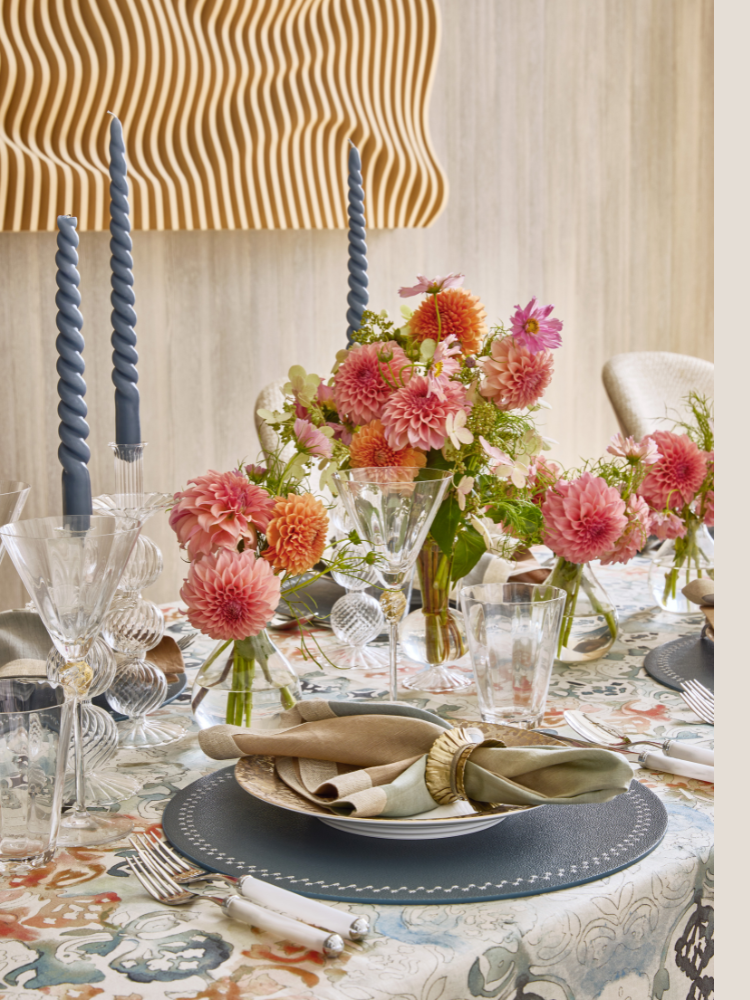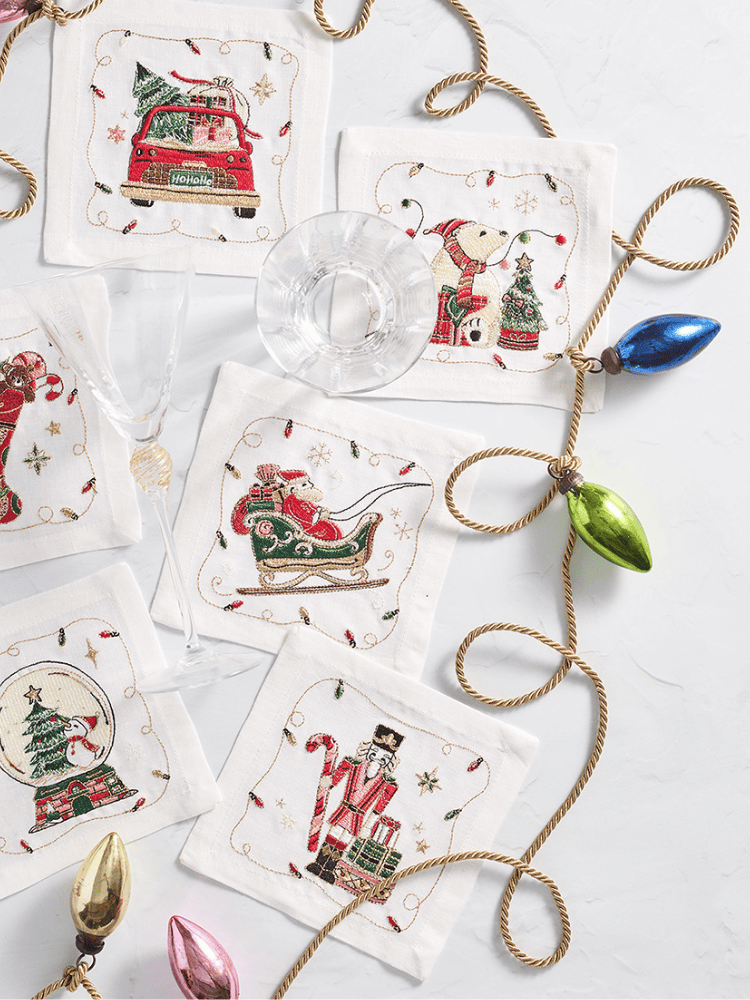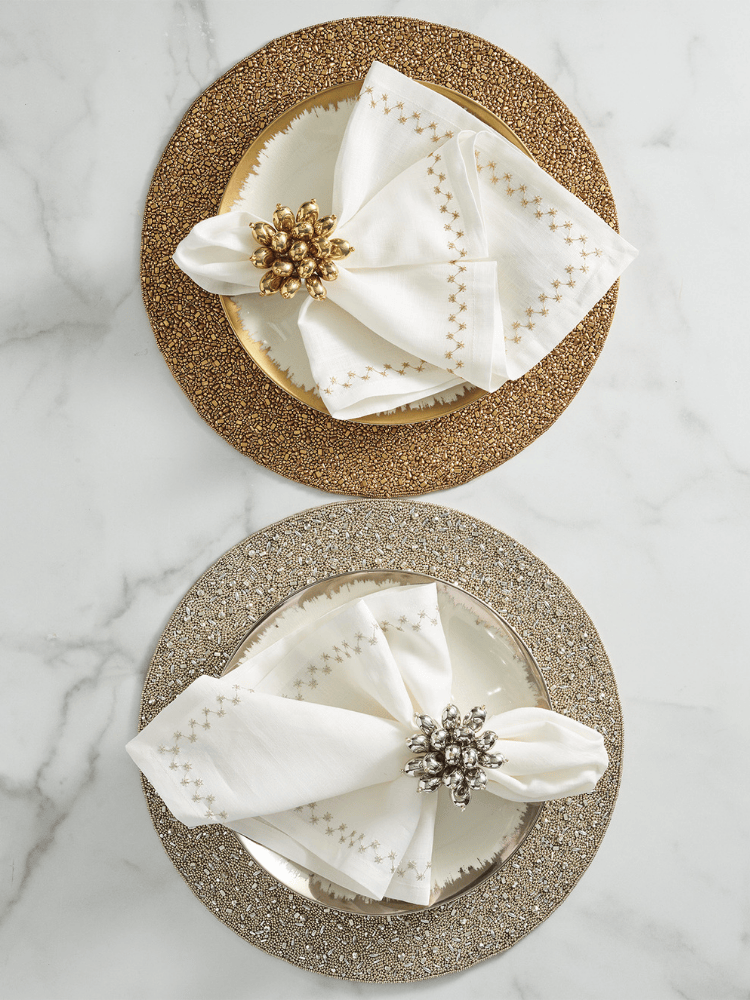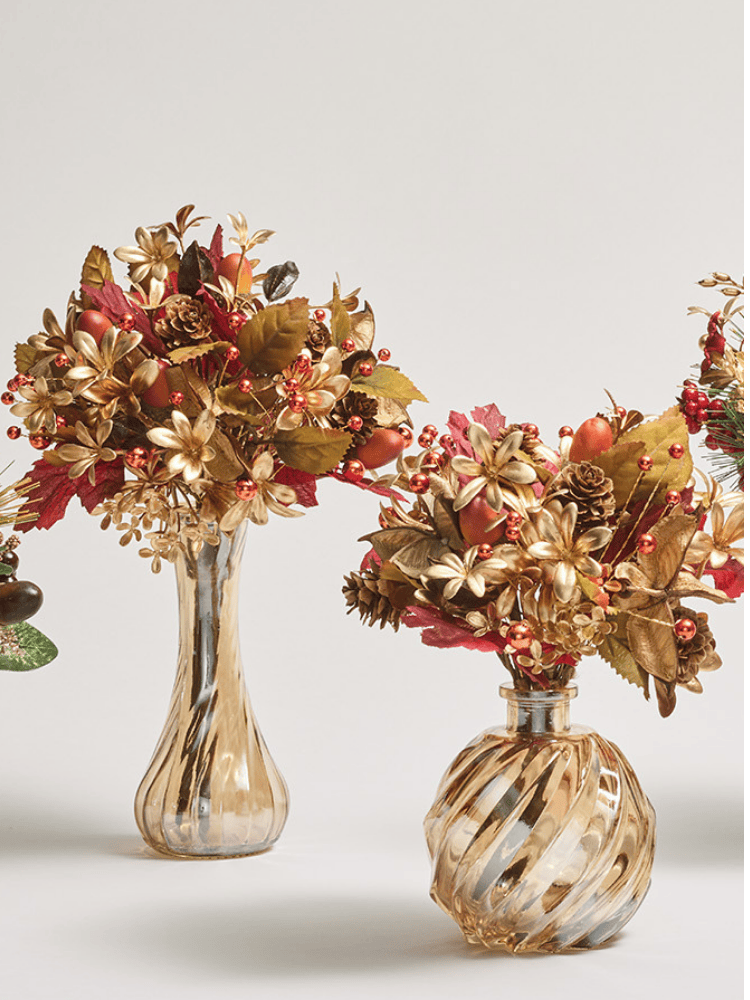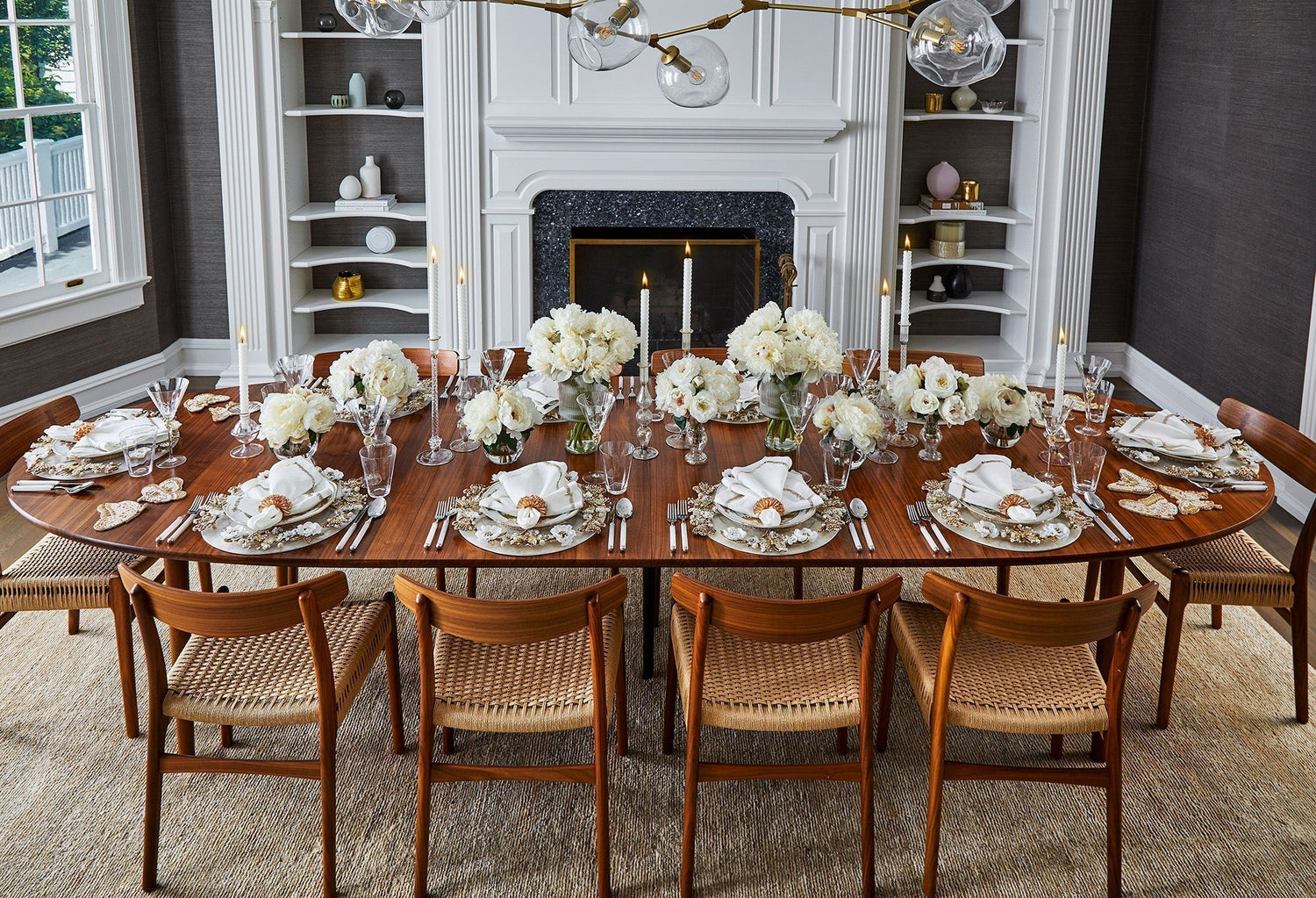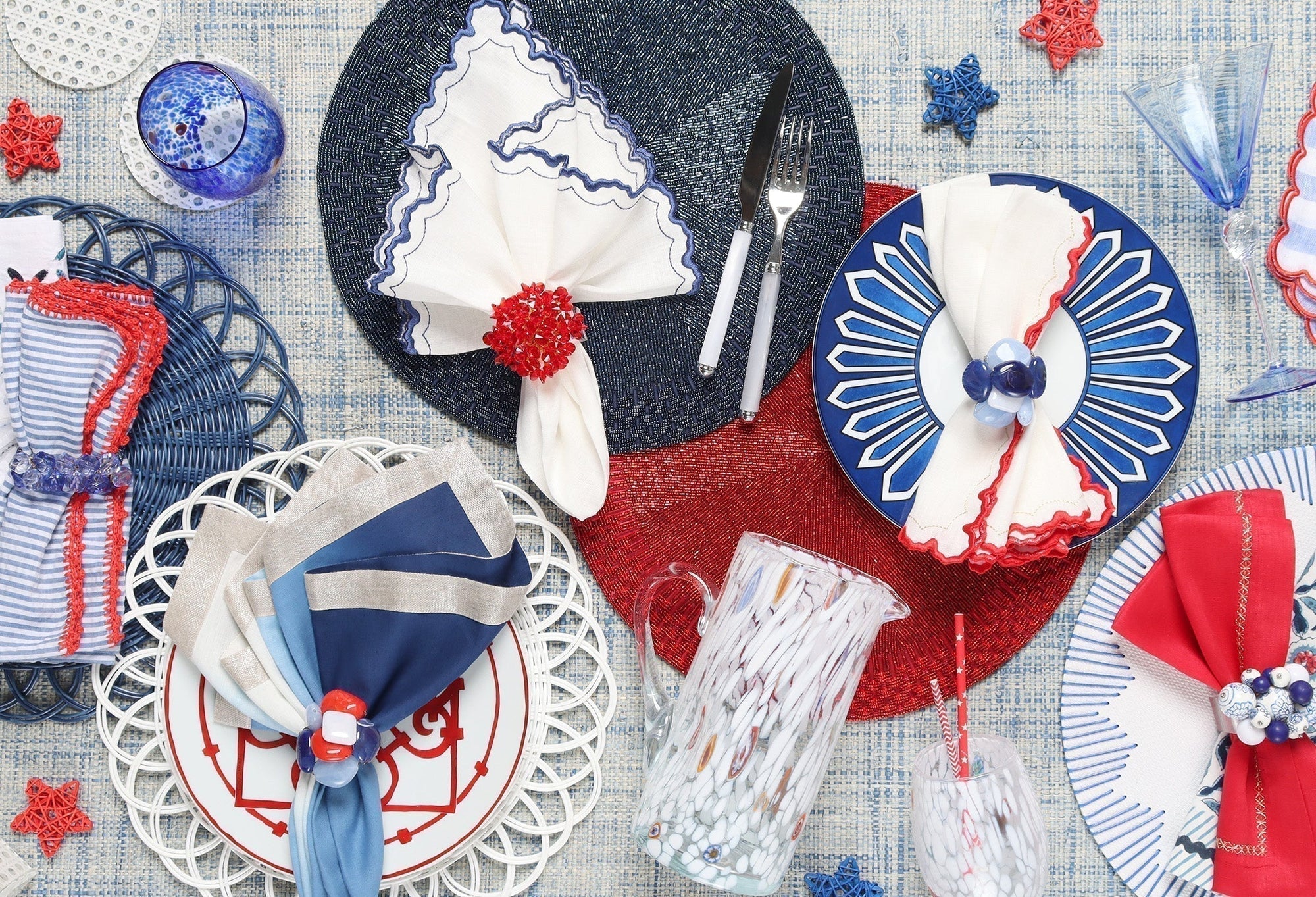How to Style a Vase for the Wall Like a Designer

Vases for walls are rich in history with a popularity that’s rising even higher in 2025. From ancient Roman terracotta and Asian porcelain to European Delftware, Victorian wall pockets, and contemporary sculptural ceramics, wall vases have consistently influenced the way we incorporate flowers into our lives. Now, they’re creating spaces that feel even more like a curated gallery that’s part nature, part art, and full of atmosphere.
Whether you’re styling soaring entryways or giving fresh polish to the powder room, a wall vase transforms a space with surprising ease. And once you hang one, it’s hard to imagine a wall without it.
In this guide, designer Kim Seybert shares her expert insights on wall vases, which cover scale, proportion, materials, and floral ideas for every season and setting. Whether your decor leans modern, rustic, or traditional, here’s how to let your walls bloom.
Choosing the Right Vase for Wall Decor

The secret to choosing a wall vase you’ll love? Think about those three magic design words: scale, style, and material.
How to Nail Scale & Proportion
Sizing separates vases from fillers to create elegant focal points. A large wall vase will feel at home on expansive walls in entryways, dining rooms, or above a console in the living room. Ranging from 14 to 20 inches tall, these larger wall vases can dominate and disrupt the balance of smaller spaces. At 6–10 inches, a compact vase fits better in tighter spaces, such as powder rooms or kitchen nooks.
Generally, aim for your vase to occupy about one-third to one-half of the wall section it sits on. On a 36-inch stretch of wall, a single vase of 12–16 inches tall feels balanced. If you’re hanging multiple vases, let the wall itself frame them. Keep at least 8–12 inches of blank space between each vase to prevent the arrangement from feeling crowded.
Vase Materials with Enduring Style
Each material carries its own design language. Here are four timeless choices designers return to again and again:
- Ceramic: Offered in terracotta, stoneware, earthenware, and porcelain, ceramic appears often in vintage-inspired, coastal, and refined interiors. Glazed ceramics feel more tailored and polished, while matte styles can read relaxed and grounded next to limewash, plaster, or unfinished wood.
- Glass: An adaptable choice that works well in minimalist, artistic, and bohemian spaces. Clear, smoked, or colored glass can complement florals, add lightness to tiled backsplashes, or soften patterned wallpapered walls.
- Metal: A strong choice for industrial, contemporary, or traditional homes with contrast. Brass adds richness when paired with marble or wood. Blackened or antique finishes add depth and patina, especially when paired with crisp, clean lines or modern lighting.
- Wood: Ideal for Scandinavian and refined rustic styles. Smooth, sculptural wood softens sharp architecture, adds texture to neutral palettes, and layers beautifully with linen and natural fibers.
The Classic Wall Vase Lineup
Meet the main types of wall vases: pocket, shelf, and hanging. Each choice works for distinct design choices:
- Pocket vases: Resting right against the wall, pocket vases offer a clean, architectural look. This streamlined option works especially well in small spaces, tiled kitchens, or gallery walls where space is limited. This minimalist silhouette strikes a perfect balance between style and restraint.
- Shelf-mounted vases: Resting on a ledge, above consoles or in dining rooms, these vases have more depth and presence. Often, these designs resemble small sculptures when styled alongside art, books, or other objects.
- Hanging vases: Suspended by leather, rope, or metal, hanging vases bring vertical interest and gentle movement to the wall. Depending on the material, this choice can feel relaxed or refined. This style works especially well in bohemian or coastal interiors that allow for mixing styles outside the box.
Best Spots in Your Home For a Wall Vase

Wall vases work nearly anywhere, but here’s where they really steal the spotlight:
- Entryway Elegance: A decorative wall vase filled with fresh mint, eucalyptus, or seasonal stems sets the tone the moment guests arrive. Think of it like the floral version of a welcome mat, but way chicer.
- Defining Dining Rooms: Mount a few wall flower vases above a sideboard or between sconces. Coordinate the stems with your tablescape if you’re entertaining, or leave them empty as a focal point.
- Polished Powder Rooms: Tight on space? A compact vase above the towel hook or beside the mirror can hold dried florals or sprigs of rosemary.
-
Beautiful Bedrooms: Hang modern wall vases above nightstands or as a pair at each side of the bed on top of a decorative drink coaster. Pampas, ivy, or simple dried grasses add quiet luxury.
Designer Note: Try matching elements in your vases to your lighting hardware for a coordinated look.
Floral Ideas for Wall Vase Styling

Once you’ve selected a vase, let’s break down how to pick flowers to make your wall vase bloom. Here are a few ways to think outside the bouquet:
Seasonal Flowers
Let the time of year or holiday guide your selection. Planning your flower rotation around grocery runs or farmers market visits also makes it easy to keep things fresh:
- Spring: Cherry blossoms, sweet peas, and tulips
- Summer: Wildflowers, trailing vines, and herbs
- Fall: Maple leaves, dried hydrangea, and rose hips
-
Winter: Cedar, pine, ilex berries, and preserved citrus
Faux vs Fresh
Fresh flowers are lovely for fragrance and snipped-from-the-garden charm. Yet, florals can fade fast and require extra work for harder-to-reach wall vases. Dried or preserved options are perfect for when you want to set it, forget it, and still have it look good. A few low-effort favorites:
- Eucalyptus: A hint of silver, minty scent, and leafy elegance. Baby blue and silver dollar varieties suit many wall vases and last for months.
- Pampas grass: Feathery, full of soft movement, and a natural fit for neutral palettes. It adds height and texture with no watering needed.
- Dried stems: Think lavender, ruscus, or bunny tails. A few flowering branches can provide a grounded backdrop that lasts through the seasons.
Helpful Hint : As a classic designer’s choice, Diane James’ faux floral arrangements offer a high-end option that pairs beautifully with Kim Seybert luxury vases.
Single Stem or Small Bouquet?
Start by looking at your vase. Its size, shape, and mounting style should guide your floral choice.
Single stems work best in narrow or pocket-style wall vases. Highlight the beauty of a single standout bloom, such as a garden rose, calla lily, or bird of paradise, for dramatic impact with minimal effort.
Small bouquets are suitable for larger or shelf-mounted vases that can accommodate more volume. Keep it casual: pair one or two focal flowers with filler like seeded eucalyptus or wispy grasses.
Floral Tip: Match the vase's shape to the feel of the flowers. A tall, slim vase works well with structured stems. A rounder or softer vase calls for more organic, free-flowing shapes.
How to Hang a Wall Vase Safely and Stylishly

Even the prettiest vase needs proper support. Here’s how to hang your wall vase with confidence and an eye for design:
Hardware That Holds Up
When selecting the vase’s support system, consider the weight and wall type:
- Light vases (under 5 lbs): Small nails, adhesive strips, or picture hooks will do the trick.
- Medium weight (5–15 lbs): Opt for drywall anchors or screw directly into a stud.
- Heavier pieces (15+ lbs): It’s best to use wall studs only or consult a pro.
Framing For Flow
Wall vases shine when there’s rhythm, not repetition. Designers often group in threes, play with size, and guide the eye like a visual crescendo.
With vertical arrangements, stagger heights for a subtle lift. For a horizontal layout, shift sizes or spacing to avoid rigid symmetry. For example, try scaling up with vases of 8 inches, 12 inches, and 16 inches for a dynamic yet harmonious display. Mixing shapes or materials? Maintain at least one aspect of consistency for balance.
Decor Tips from the Pros
Designers love wall vases for livening up gallery walls that feel too flat or formal. It can be a relaxed and refined addition with just the right amount of style. Try tucking a vase between framed artwork to break up hard lines or layering in colorful glass candleholders.
Another bright idea is using a picture light above your wall vase for a soft, gallery-style glow. Even placing it across from a mirror or by a nearby table lamp can add warmth and subtle drama without the need for built-ins.
A single vase can also tie a space together by echoing tones, shapes, or finishes already in the room, such as warm brass, soft neutrals, and organic silhouettes.
More Than Just a Vase on the Wall

Far from a wallflower, wall vases are a designer secret with staying power. Whether part of a gallery wall or styled solo, they connect classic architectural character, stylish vase shapes, and tablescape trends.
A timeless fixture for the dining room, wall vases can also serve as part of your design concept from luxury placemats to high-end glassware. For more ideas that feel both fresh and fashionable, Kim Seybert’s dining decor collection moves from weekday dinners to celebration-worthy moments.

